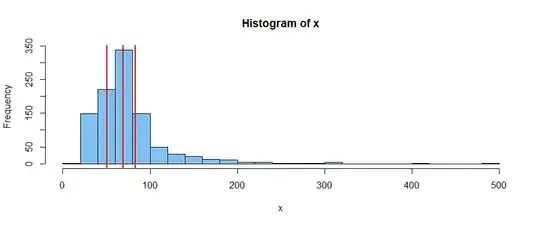Our organisation is currently putting together a report based on a salary survey of employees within a specific industry (a huge array of questions with varying types of answer). We surveyed 11,000 people, and there are 400,000 people nationwide within this industry.
We're now putting the report together and want to include margin of error in our statistics. I've been charged with doing this, and while I'm mostly confident in super-basic statistical analysis, I just want to check that I'm doing things right.
As someone who isn't particularly well versed in this side of stats, I defaulted to some online calculators. The first one that came up was from SurveyMonkey, and while I wasn't expecting that to be particularly scientific (just scientific enough), but I was a bit confused by the method. The user-fillable boxes asked me for sample size + population size and the confidence interval I wished to calculate at (95%), and returned a 1% margin of error.
However, below it explains what the formula to calculate margin of error is, and this is where I got lost:
$$z\times\frac{\sigma}{\sqrt{n}}$$
where $n$ = sample size, $σ$ = population standard deviation, and $z$ = z-score.
I hadn't entered standard deviation in the initial box (which is difficult to nail down in our survey due to the varied nature of it, with lots of plain text answers). When I used the standard deviation of salaries (I chose this as it's the key variable in the report, came out as 7) in the above equation, I ended up with a very different margin of error. I tried to do some reading around this and it seems there are couple of different methods to get to margin of error (something that often seems to be completely misinterpreted as a statistic, which must be endlessly frustrating!) but I'll admit that I struggled to get my head around them.
Apologies for the long winded explanation of something that is probably very elementary, but I guess my questions are:
- Is there a way to calculate margin of error if you only have sample size/population size?
- How did SurveyMonkey arrive at the 1% figure?
- Is there a simple way to calculate standard deviation here that I've completely overlooked?
If it helps, tools-wise I'm using Excel and general internet advice for everything.
Thanks in advance – I feel like there is probably a very simple answer to this problem that is eluding me.
